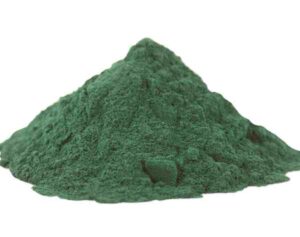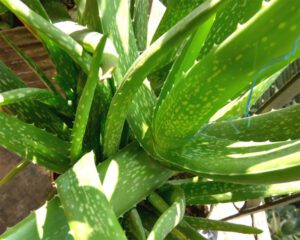Commercial oyster mushroom farming is a common business in some South East Asian countries. It is a popular food item in these countries. Here we are going to discuss more about commercial oyster mushroom farming business.
Oyster mushroom (Pleurotus ostreatus) is actually a common edible mushroom. It is also known by many other different names such as oyster fungus, hiratake etc. Oyster mushroom has a broad, fan or oyster-shaped cap spanning 2 to 30 cm. Natural specimens range from white to gray or tan to dark-brown. The margin is inrolled when young, and is smooth and often somewhat lobed or wavy. The flesh of these mushrooms is white, firm and varies in thickness due to stipe arrangement. The gillsare white to cream, and descend on the stalk if present. The stipe is often absent, but it is short and thick when present.
Oyster mushroom farming first started in Germany as a subsistence measure during first World War. But now it is grown commercially in many countries around the world for food. Oyster mushroom is related to the similarly cultivated king oyster mushroom. Commercial oyster mushroom farming can also be done for using these mushroom industrially for mycoremediation purposes.[1]
Actually, the oyster mushroom is one of the more commonly sought wild mushrooms, though it can be cultivated on straw and other media. Oyster mushroom is the third largest cultivated mushroom in the world. And China is the world leader in total oyster mushroom production and consumption. China alone contributes about 85% of the total world production of about a million tonnes. Other major oyster mushroom productive countries are Korea, Japan, Italy, Taiwan, Philippines and Thailand. But other countries can also contribute to total world production if right export facility is available.
Uses of Oyster Mushroom
Commercial oyster mushroom farming is done mainly for food production purpose. Oyster mushroom is a choice edible, and is a delicacy in Japanese, Korean and Chinese cuisine. The oyster mushroom is frequently served on it’s own, in soups, stuffed or in stir-fry recipes with soy sauce. Oyster mushrooms may also be used in sauces, such as oyster sauce. Oyster mushroom is very appropriate for people with hypertension, diabetes, obesity due to it’s low sodium, potassium ratio, starch, fat and calorific value.

How to Start Oyster Mushroom Farming?
Different growth techniques are used for commercial oyster mushroom farming business. Here we trying to describe more about these techniques.
Polythene Bags
In this system, the paddy straw is chopped into small pieces of 5 cm length, soaked in water for 8 hours and the water is squeezed out. Then the paddy pieces are placed in polythene bags that are 45 cm in length and 30 cm in diameter perforated with holes. About 200 grams of grain spawn is mixed 5-6 kg of straw in these polythene bags. The spawning is done up to 2/3rd of the bags and mouth is tied. The bags are then placed on shelves in the growing room having temperature of 24°C to 26°C and relative humidity of 85%.
Rectangular Blocks
Bottomless wooden trays of 50 x 33 x 15 c, in dimensions are required in rectangular blocks oyster mushroom farming purpose. A transparent polythene sheet is spread on the bottom of the tray. Then the wet, chopped paddy straw is filled in the tray to form a thick layer of 5 cm and the spawn is scattered consistently. lay another 2 layers of straw and repeat the spawning process after every layer. A last layer of straw is added and then compressed firmly. About 200 grams of spawn is required for 2 blocks and the loose ends are folded over the straw block and tied with a string.
Climate Requirement For Oyster Mushroom Farming
Commercial oyster mushroom farming can be done at a moderate temperature ranging from 20°C to 30°C and humidity between 55 and 70 percent for a period of 6 to 8 months in a year. Oyster mushrooms can also be cultivated in the summer months by providing the extra humidity required for it’s growth. March/April to September/October is the best growing season for commercial oyster mushroom farming business.
Choose a Variety
There are numerous varieties of oyster mushrooms available throughout the world. And all of these varieties are edible except P. olearius and P. nidiformis, which are reported to be poisonous. Consult with a local expert for having good recommendation while choosing a variety.
Type of Substrate For Oyster Mushroom Farming
Commercial oyster mushroom farming can be done on any type of dried agricultural waste such as wheat or paddy straw, bajra, jowar or maize waste or oil seed wastes or leguminous crops.
Growing Oyster Mushroom on Straw: First of all, you have to chop the straw, and by doing so, the cell walls of the straw are broken (making it very easier for the Oyster mycelium to access the nutrients). Chopping the straw can make the particle size smaller allowing a more compact substrate.
Treat Straw: After chopping the straw, treat using the method which best meets the needs of the grower the straw is formed for the oyster mycelium. Micro-organisms are killed by treating the straw and competition for the obtainable nutrients is limited.
Inoculate: Add spawn into the treated straw, and this is the material used to introduce the mushroom mycelium to the new substrate.
Incubate: Incubation must ideally occur at 75 degrees for about 3 weeks depending on the inoculation rate. Bags must be placed with at least a palm distance between them to limit overheating. The fungus is ready for fruiting, when the mycelium has fully colonized the substrate. Various species of mushrooms want different temperature regimes all to require high humidity during fruiting (70 to 85 percent). Frequent spraying of water is necessary for the cropping room depending upon the atmospheric humidity.
There are 4 parameters to be aware of when fruiting. These parameters are light, humidity, temperature and CO2 level. For most oyster mushrooms a well-lit room at 85 to 90 percent humidity, 65 degrees and CO2 below 800 PPM is ideal.
Harvesting
Harvesting generally occurs about 5 to 10 days after the substrate is moved into fruiting conditions. Mushrooms must be harvested before the caps completely flatten out.
Yield of Oyster Mushroom From 1 Kilo Dry Straw
If you can use good quality spawn, substrate and under optimum conditions, you can easily harvest 600 to 900 grams of fresh mushroom from 1 kilo of dry straw. And about 1 kg of oyster mushrooms can be obtained from 5 to 6 kg of wet straw.
Marketing
Marketing oyster mushrooms is not easy in all places. So, you have to determine your marketing strategies before starting this business.
These are the common steps and ways for starting and operating a successful oyster mushroom farming business. Hope this guide has helped you! Good luck and may God bless you!






